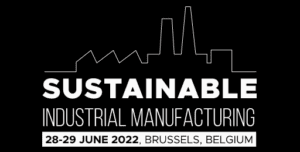ESG Summit 2022: 3 Takeaways for Building Companies and Building Materials Manufacturers
Global environmental, social and corporate governance (ESG) assets are likely to surpass $50 trillion by 2025 (up from $41 trillion in 2022) – one-third of the projected total assets under management worldwide, according to a January 2022 report from Bloomberg.
The buildings, building materials and real estate industries, particularly, are taking notice. I recently spoke at the ESG Summit 2022 hosted by Join Digital (a smart buildings technology company), investment firm Eastdil Secured, and building owner/operator Spear Street Capital.
The invite-only, executive-level event covered topics like energy, data and people impact; the case for investing in talent; and the latest ESG rules and regulations, including the new climate disclosure guidance from the U.S. Securities and Exchange Commission (SEC).
My panel, which focused on ESG “Innovation in Social Equity and Talent,” also included Emily Ma from Google, Erika Ryback from PwC, and Raymond Wu from Wynd Technologies.
Our conversation focused on three main topics:
1. ESG Data and Traceability
Traceability continues to be a critical theme, and it can’t be truly achieved without data. Our panel addressed several key arguments for data that can be actionable. For example, in commercial buildings, most modern construction have air quality thermostats for environmental sensing and air quality monitoring. The data captured by these units means air quality can be continuously optimized and adapted to current environments, like increasing ventilation or air purification. Perhaps more importantly, it’s a way to ensure occupants and workers in these buildings don’t need to worry as much about air quality, especially as we emerge from the COVID-19 pandemic.
Of course, the ability to capture data about the work environment and health/safety applies not just to desk workers, but frontline workers in factories, plants and other non-office settings as well. Connected worker technologies – which digitally connect frontline workers with the people, information, systems and machines needed to do their jobs well – can reveal important data about how well workers are adhering to ESG, health/safety, and sustainability protocols, and where things can be improved. The data can show what’s effective and what’s a bottleneck, and allow leadership to make quick changes to the process across teams, lines and even sites.
2. ESG Fundamentals: Technology Plus Policy and Capital
One panelist said that holistic innovation in ESG must include technology plus policy and capital. Without governance by way of corporate policy, as well as a committed, long-term financial investment (along with a clear process for adherence during execution, as mentioned above), ESG initiatives will most likely fail.
Companies need to hold themselves accountable with an ESG governance structure that applies across the value chain and across suppliers. By doing this, it will ultimately be easier to have more transparent, direct discussions and to meet ESG goals.
A financial commitment to ESG also is critical. Google, for instance, has invested both financial and talent resources to reduce food waste. The company created an algorithm that can provide suggestions on what types of food to serve to employees; for example, it found that serving broccoli and cauliflower on the same day created more waste. The company also found that providing more shallow plates (1 inch deep versus 1.25 inches, for example) also decreased the amount of food in the trash.
3. ESG’s Role in a More Equitable Workforce
The “Great Resignation” has consequences not just around the ability to hire and retain employees. It also affects the way buildings – whether office, residential, warehouse or factory – are constructed and how workers in these spaces are oriented.
Whether you’re an executive in the top-floor corner office or the person in the mail room, workplace conditions like air quality, lighting and mobility are increasingly a priority for both builders and owners/operators. Especially for younger employees, digitization and technology are no-brainers; they grew up being mobile and connected, and they want their employers and workspaces to be mobile, connected and flexible, too. As more employees physically return to work, and with social distancing less of an issue (for now), companies must be ready to support and embrace more styles of working than they may be used to.
For more information on the intersection of ESG and the connected worker, visit Parsable’s sustainability offering.






